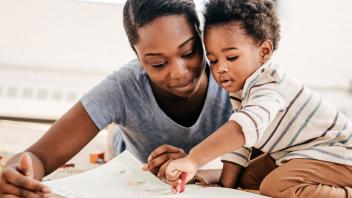Most children learn to read by age 7. Learning to read is built on a foundation of language skills that children start learning at birth — a process that is both complicated and amazing. Most children develop certain skills as they move through the early stages of learning language.
The following list of such accomplishments is based on current research in the field, where studies continue and there is still much to learn. As you look over the list, keep in mind that children vary a great deal in how they develop and learn.
If you have questions or concerns about your child’s progress, talk with your child’s doctor, teacher, or a speech and language therapist. For children with any kind of disability or learning problem, the sooner they can get the special help they need, the easier it will be for them to learn.
From birth to age 3, most babies and toddlers become able to:
- Make sounds that imitate the tones and rhythms that adults use when talking
- Respond to gestures and facial expressions
- Begin to associate words they hear frequently with what the words mean
- Make cooing, babbling sounds in the crib which gives way to enjoying rhyming and nonsense word games with a parent or caregiver
- Play along in games such as “peek-a-boo” and “pat-a-cake”
- Handle objects such as board books and alphabet blocks in their play
- Recognize certain books by their covers
- Pretend to read books
- Understand how books should be handled
- Share books with an adult as a routine part of life
- Name some objects in a book
- Talk about characters in books
- Look at pictures in books and realize they are symbols of real things
- Listen to stories
- Ask or demand that adults read or write with them
- Begin to pay attention to specific print such as the first letters of their names
- Scribble with a purpose (trying to write or draw something)
- Produce some letter-like forms and scribbles that resemble, in some way, writing
Excerpted from: DeBruin-Parecki, A. with Perkinson, K. & Ferderer, L. (January, 2000). Helping Your Child Become A Reader. U.S. Department of Education.
